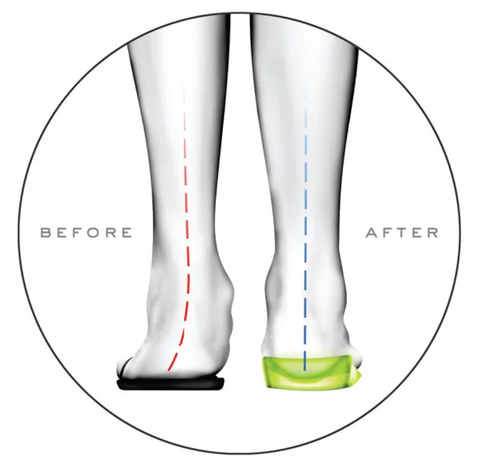What Is Plantar Fasciitis & How is It Treated?

What is Plantar Fasciitis?
Plantar Fasciitis is a condition caused by small tears in the tissues of the foot that support your muscles and the arch of your feet. Plantar Fasciitis is a common condition and can cause significant pain and inflammation.
Symptoms of Plantar Fasciitis:
Plantar fasciitis symptoms are characterised by pain in the bottom of your foot - at the front or center of the heel bone. In particular, it is often worse in the morning when taking the first few steps and when standing after sitting for an extended period of time. You are also more likely to feel it right after exercise.

Causes Of Plantar Fasciitis:
A number of things can contribute to plantar fasciitis. One example is tight calf muscles this can mean that when you walk, the ankle joint cannot bend to let your weight move forward over the foot. Instead, the bending occurs in the arch area, placing a great deal of strain on the plantar fascia, and over time, the tissue can begin to tear where it attached to the heel bone (calcaneus). Another factor that can contribute is the hard man made surfaces that we now walk on, the human foot is adapted to softer more undulating surfaces such as grasslands and sand, these types of terrain are more forgiving and cushion the impact of each step. However the modern world is full of concrete which is flat and hard, this means the foot is forced to absorb the impact and when this occurs, the arch flattens and the plantar fascia get stretched out further and may tear. In some people the tissue may also degenerate with age, especially if the person has several of the risk factors below.
Your risk of suffering from Plantar Fasciitis may increase if you:
- Wear unsupportive flat footwear
- Have flat feet or a very high arch
- Often wear high-heeled shoes
- Have tight Achilles tendons, or “heel cords”
- Your job requires prolonged standing
- More common in women
- More common in people over 40
- Have limited Dorsiflexion of the ankle
- Suddenly increase physical activity or running distance
- Are overweight
- Have overpronation (Feet rolling inwards when you walk or run)
- Rapid weight gain such as in pregnancy
- Have an unusual walk or foot position
Treatment of Plantar Fasciitis:
Fortunately studies have shown that 90% of plantar fasciitis cases can be healed with conservative, in-home treatments. Using a combined approach of rest, ice, stretching and effective shoes is considered best:
- Resting and applying ice to the arch of your foot can help to soothe the pain and calm the inflammation.
- After mild stretching or physical activity use a frozen water bottle to roll under the arch of your foot for 10-20 minutes.
- Targeted stretching of the muscles and tendons in the lower legs, ankles and feet.
- Wearing supportive orthotic shoes and insoles.
- In a recent study 61-68% of suffers reported improvement in their plantar fasciitis symptoms just by wearing more supportive footwear and changing nothing else. Shop for women’s and men’s orthotic shoe and insole options in our online store.

Other options include anti inflammatory drugs and ointments, use of a splint at night to prevent the plantar fascia from tightening up at night and in the worst cases a cortisone injection or surgery may be required as a last resort.
